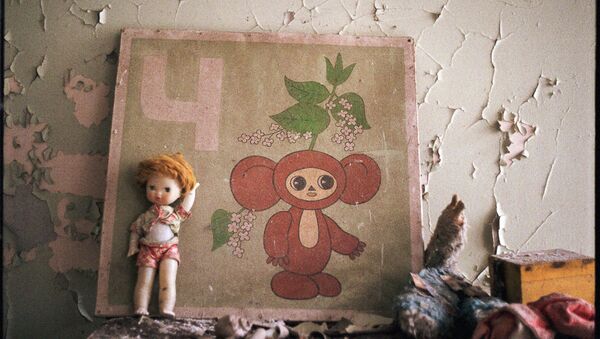If you watch the old soviet TV news bulletins, you may notice the use of the term “peaceful atom” in stories about the nuclear industry. With this type of terminology in mind, you could very well call the small Ukrainian town of Pripyat “the citadel of the peaceful atom”. It was built in the 1970s to house the staff of the nearby Chernobyl nuclear power plant and due to its strategic importance it was closed to outsiders, especially foreigners, and guarded by the army and the KGB.
Nevertheless, on April 26, 1986 the people of Chernobyl completely lost their sense of security when the following broadcast aired on local radio and TV channels:
“The City Council informs you that due to the accident at Chernobyl Power Station in the city of Pripyat the radioactive conditions in the vicinity are deteriorating. The Communist Party, its officials and the armed forces are taking necessary steps to combat this. Nevertheless, in an effort to keep people as safe and healthy as possible, the children being the top priority, we need to temporarily evacuate the citizens in the nearest towns of Kiev Oblast.”
Despite the careful wording of the announcement, most people in Pripyat already knew that “the radioactive conditions” suddenly deteriorated because of a serious nuclear disaster – two blasts at Reactor Unit 4 followed by fire, and that things were much more serious than they looked.
Nevertheless, even after the first deaths were reported and the first victims suffering from acute radiation sickness were rushed to the hospital, the authorities were not in a hurry to evacuate the citizens of Pripyat. Grocery stores, schools and kindergartens were still open until noon.
Vadim Kodubovsky, a former Pripyat resident and student at the time, said in an interview to Zhitomir.info channel on Youtube that there was almost no sense of urgency in the way his teachers acted that day.
“At night my dad had to leave, responding to an emergency call. But in the morning we still went to school. Of course, there were no regular classes, we saw a demonstration of gas masks and were taught how to use them, it looked like some kind of training. Nobody said that anything had happened. Then, when we walked back from school, we saw fire trucks, firefighters were pouring water on pine trees. It looked weird.”
As local authorities realized that radiation levels in the areas surrounding Chernobyl power plant were rising uncontrollably, and that they were in fact dealing with a risk of very serious radioactive contamination, a total evacuation of Pripyat was ordered. Police officers walked door-to-door to rush people to buses. According to locals, those who refused to leave immediately were literally dragged out of their homes, leaving behind their pets and belongings.
Thirty years after the disaster, Pripyat, a town which once had a population of 49 thousand, is still a ghost town. The levels of radiation dropped significantly since 1986 due to the decay of the short-lived isotopes released during the accident. Several Ukrainian companies offer guided tours to the alienation zone, and tourists can see for themselves how nature is reclaiming the place that many locals once called “fairytale town” for its modern design and prestigious jobs that young Soviet engineers were getting at the Chernobyl power plant.
Pripyat has inspired many writers, musicians, filmmakers and computer game designers. Its deserted streets can be seen in games like Counter Strike: Global Offensive, Call of Duty series and Stalker as well as in movies such as “A good day to die hard” and “Chernobyl Diaries”.
But for those who once lived in Pripyat, some of those images will probably bring back memories – both sentimental and haunting – about the years they spent in the “citadel of the peaceful atom” and April 1986 when their place of residence and their whole lives changed forever.


